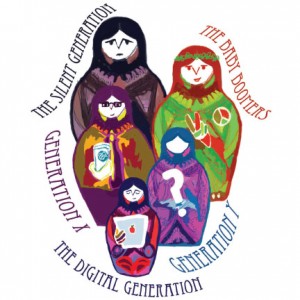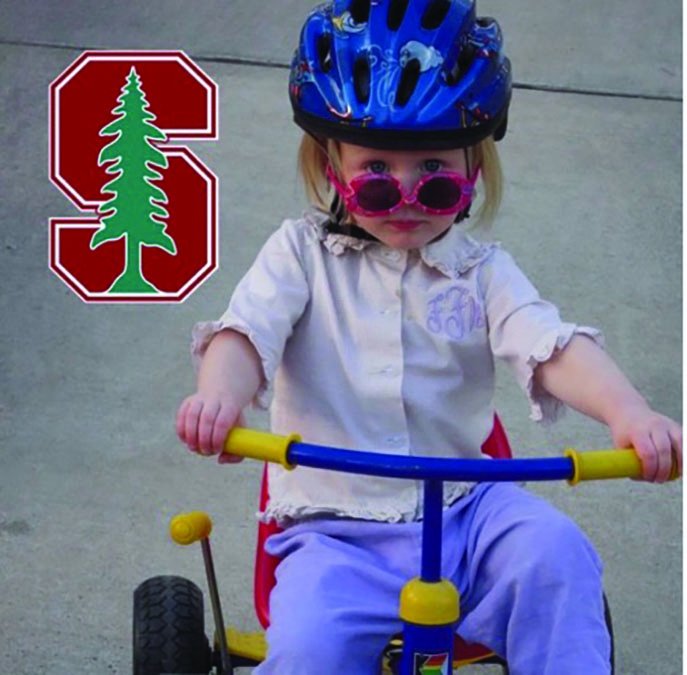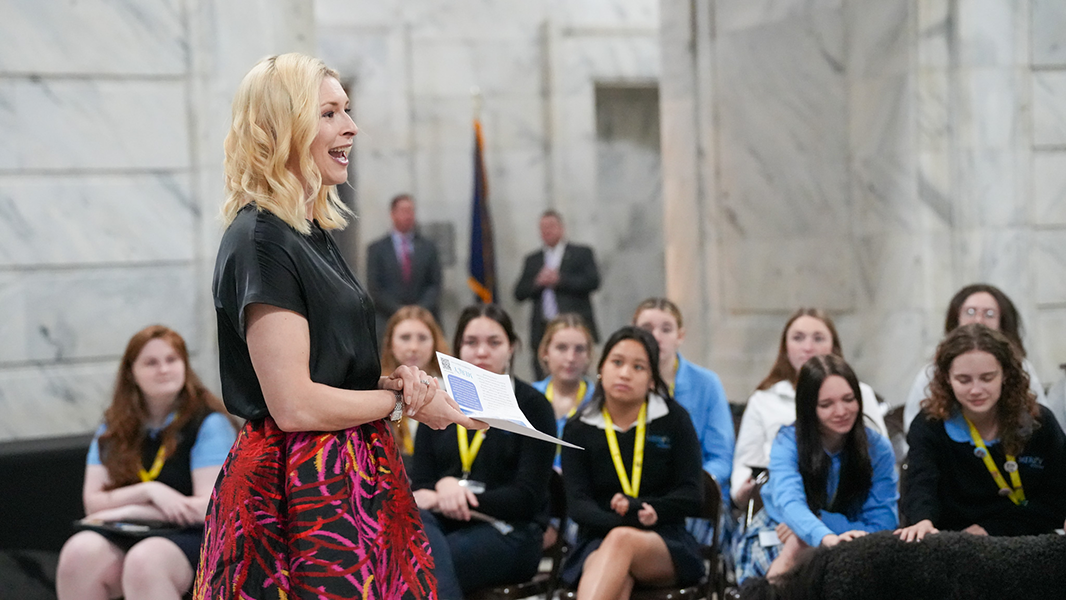An investigation of what defines the generation of Upper School students and how the factors impact their lives

Hockaday’s Student Diversity Board deemed race, religion, ability, age, gender, sexual orientation, socio-economic class and ethnicity as the eight identifiers that define an individual. There is one other identifier, however, that transcends all of these, that every current Upper School student has in common: their generation.
Members of a generation, however else divided, share a time period—a life span.
This year marks the final one in which the Upper School will consist exclusively of Generation Y’ers, people born between the years 1980 and 1999.
Dr. Margaret Morse, Upper School counselor and member of Generation X, said that experiencing things together as a group is one of the many unifying factors of a generation.
“A person is created by the world around them,” Morse said. “There is always this dialogue between the individual and the context in which they exist.”
The United States has 70 million generation Y’ers, including everyone in the Upper School. So what defines Generation Y?
Generation X’s Children
Members of Generation Y, have been defined, at least in part, by the characteristics of their parents, members of the Baby Boomer Generation and Generation X (people born between 1946 and 1984).
Due to their parents, Generation Y’ers are among the first to (typically) have two working parents and who began having children in their 30s. Generation Y’ers have few or no siblings.
Out of these characteristics, according to parentingstatistics.org, the term “baby proofing” was born; covering sharp corners, plugging outlets and placing baby fences around the house became the norm.
In addition, unstructured outdoor play dropped by 40 percent between 1980 and 1995 as parents began to put more pressure on children to excel academically, athletically and socially.
“We do not get as much time to admire or be as aware of the world around us,” eighth grader Neha said.
Terms such as “hyper parenting”, “tiger mom” and “helicopter parents” were invented to describe the extremists of this new type of parenting.
Head of Fine Arts Department Ed Long, who has been teaching at Hockaday for over 40 years, has taught two different generations of girls and sees a rise in expectations for both parent and children.
“The parents I taught were going to a list of more demanding colleges and taking more and more difficult majors,” Long said, “ and now are having that expectation of the children I teach now.”
Generation of Change
Seventy percent of the Upper School students believe this generation, their generation, is the Generation of of Technology.
But 100 percent of those surveyed also remembered watching VCRs, before DVDs were used in homes, and 95 percent played with a Gameboy or Nintendo, before iPads and iPhones.
Generation Y was born in a world with little to none of the instant gratification that is available to us now. The children of the 80s and 90s have grown up in the largest technology revolution the world has ever seen, Long confirmed.
“The [technology] that has been harnessed could not have been dreamt about five years ago,” Long said.
The job world, as well as the skills required for current occupations, is constantly changing too, Long said. Jobs now require the ability to change and grow as the job does.
“They are preparing for jobs that will have changed by the time they get there and that all has to be in the mix of preparing,” Long said. “The thing they have to deal with is change, and one of the most adroit aspects of being a Hockadaisy at this point is knowing, understanding, fulfilling and finding power in change.”
Morse said that because of this new requirement the Hockaday curriculum and schools across the country have shifted to teaching in such a way that learning itself become easier and students are able to adapt to whatever changes.
“A student has to be resilient, adaptive, problem solver. You don’t need content you need process,” Morse said.
Generation
All About Me
Generation Y, said Morse, is being educated in a school system that emphasizes encouragement rather than discipline. Participation trophies and gold stars for everyone was the norm growing up.
“Generation Y was raised with ‘everyone is special and everyone is unique,” Morse said.
According to NAS Insights, a recruitment and statistic developer, Generation Y is, for the most part, overly confident, a consequence of a richer, overindulgent parent generation that instilled in their children a sense of optimism.
Employers, as the oldest members of Generation Y began to enter the workforce, are finding it difficult to accommodate and utilize its newest members.
“Generation Y thrives in an informal setting,” Morse said. “They do not appreciate the formalities that came with previous generations.”
According to Morse, eight to five structured work days with required formal attire won’t produce the best results. Generation Y requires creative freedom and flexibility to perform at their best.
Generation Y is more cautious in their spending and will search for more financially secure jobs, a result of growing up during the worst economic recession since the Great Depression.
“There is a lot more anxiety because you don’t know where the world is going,” Morse said.
In a much more global world than in previous generations, competition for college and jobs is much higher, and the pressure to succeed and gain a competitive edge is a prominent and universal theme within the generation.
Because of all the added pressures of this generation Long says lack of time is what he notices most.
“Comparatively, they have less time for everything. They have less time to ruminate and wonder about things,” Long said. “They are multi-taskers and they should be proud of that but they should also be wary of what sacrifices they have to make.”
Generation the New Normal
One in three people of Generation Y are Caucasian, an estimated 4 million Americans are openly gay and 35 percent of Generation Y were raised by a single parent. The world is a different place than 20 years ago.
Junior Raheela said that the definition of normal in the sense of family and social acceptance has changed.
“I think our generation is defined by an era in which the world was learning to be accepting of everyone and every idea. I feel that the ‘90s and early 2000s were not so much about ‘blending in’ but rather being yourself,” Raheela said.
“The last time I checked this diamond-speckled watch my gay boss bought me without his consent, it was 2012. Now why don’t you take your Callista Gingrich hair-do and your racist mind back to the past where they belong,” character Rocky on the NBC show “The New Normal” said in response to a racist comment.
A show about a gay couple adopting a baby from a white single mother, “The New Normal” and shows such as “Glee” and “Modern Family” portray Generation Y’s normal.
Generation Y is also the generation of the 51 percent. The United States has a population of 51 percent women and 49 percent men.
“That’s [the] norm that women will work,” Morse said.
Since the Women’s Liberation Movement in the late 1800s, the role of women has constantly changed, but until the 1960s very few women worked outside of the home, and the number has continued to grow since then.
According to the Society of Human Resource Management, in 2016, it is estimated that women will make up 49 percent of the workforce, the highest percentage it has ever been.
“The world is constantly changing around us,” said Morse, “and we can only look back when we are old to see what truly defined us.”
-Avita






